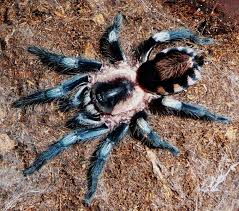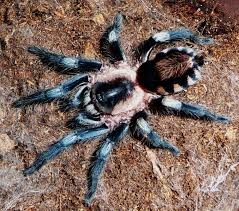Tarantuladen.co.za
Peruvian Black & White (Cyriocosmus ritae)
Peruvian Black & White (Cyriocosmus ritae)
Out of stock
Couldn't load pickup availability
A gem from the jungles of Peru, Cyriocosmus ritae is a bold and eye-catching dwarf tarantula. With its velvety black base and striking white patterning — including a stand-out heart-shaped spot on the abdomen — it’s as stunning as it is small. Great for collectors of unique species and dwarf specialists.
Quick Facts
Common Name: Peruvian Black & White
Scientific Name: Cyriocosmus ritae
Origin: Peru
Size: 2–2.5 inches (5–6.5 cm) leg span
Lifespan:
- Females: 8–10+ years
- Males: ~2–3 years
Temperament: Skittish but not defensive — quick and quirky
Coloration
Jet black body with sharp white or cream-colored leg banding
Iconic white “heart” marking on the abdomen
Clean and high contrast — like a mini zebra with flair
Often mistaken for Cyriocosmus elegans, but ritae has more pronounced white striping
Housing & Care
Enclosure Type: Terrestrial — small enclosures with moderate depth
Substrate: 2–3 inches of moist substrate (coco fiber/topsoil mix)
Humidity: 70–80% — higher humidity with good airflow
Temperature: 72–78°F (22–25°C)
Decor:
- Small hide (bark chip, cork shard)
- Leaf litter and moss
- Water dish optional — moisture from substrate usually enough
Despite its size, this species loves to burrow and web — give it anchor points and depth.
Feeding
Diet: Pinhead crickets, micro roaches, small mealworms
Feeding Schedule:
- Slings: 2–3x/week
- Juveniles: Weekly
- Adults: Every 10–14 days
Confident eater for its size — will often take down prey nearly its size
Why Keep This Little Legend?
Striking black and white contrast with a signature heart pattern
Unique dwarf species — perfect for space-conscious collectors
Surprisingly bold and visible when settled
Easy to care for and fast growers (for dwarf tarantulas)
Great intro to the Cyriocosmus genus
Notes
Extremely small — escape risk if enclosure isn’t secure
Very quick — use caution when rehousing
Not for handling
Needs slightly higher humidity and good substrate depth
Share


